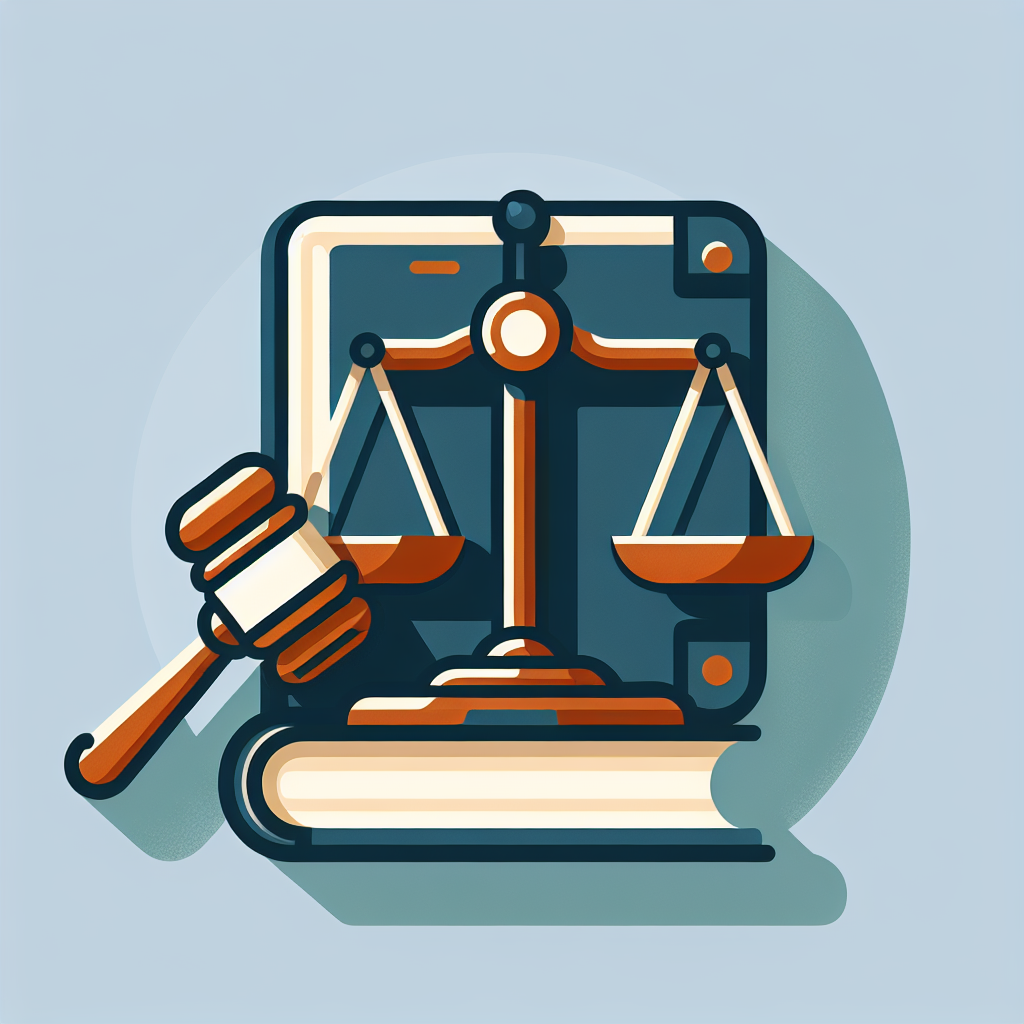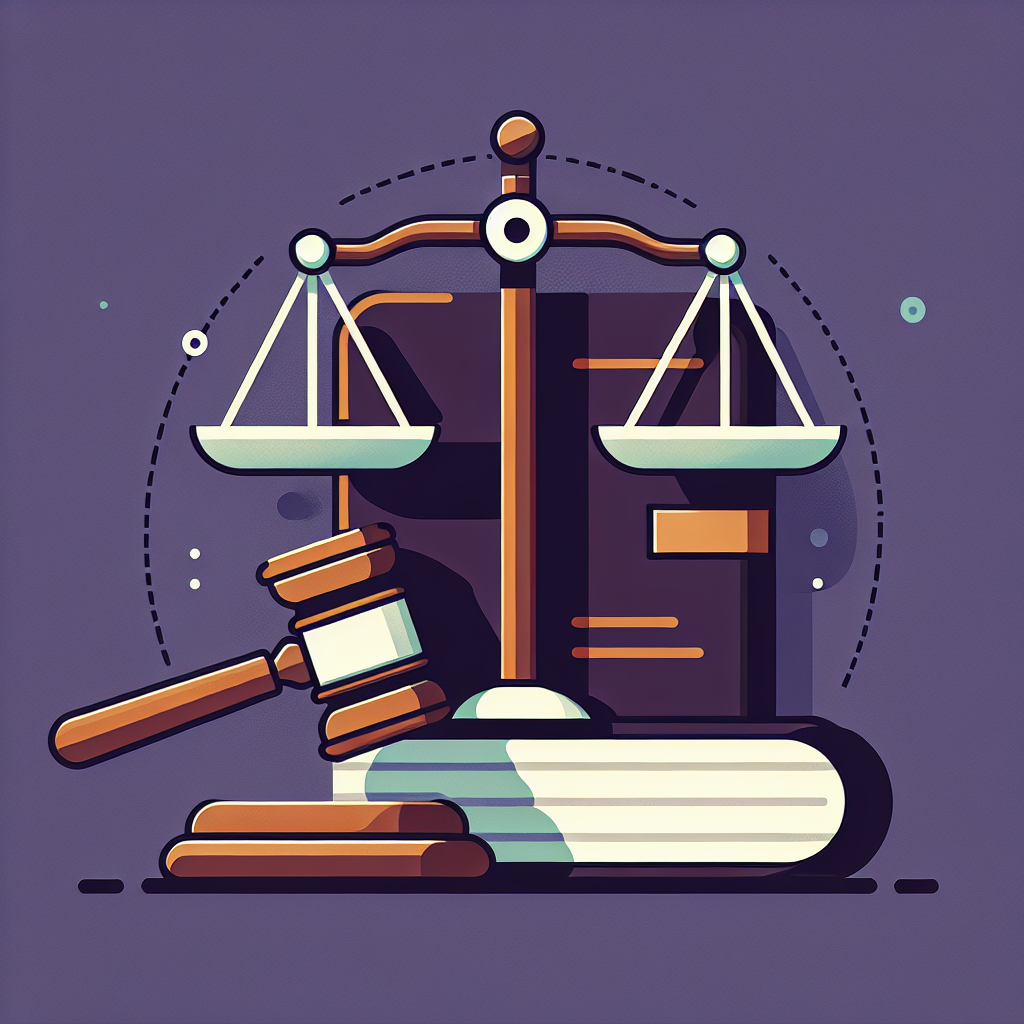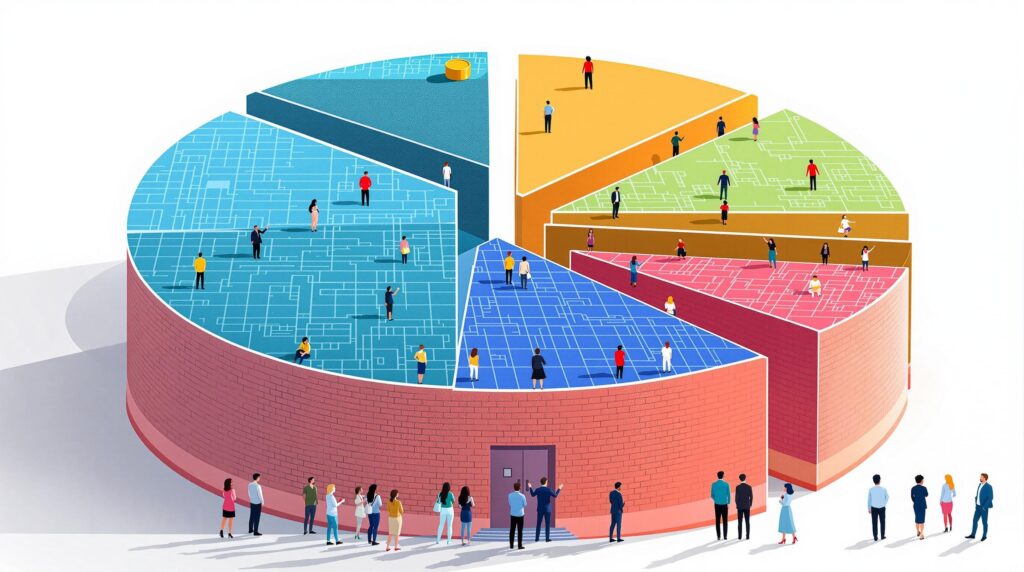[rev_slider alias=”slider-1″][/rev_slider]
Understanding the Blockchain Trilemma
As blockchain technology continues to evolve, one critical challenge remains at the forefront: the Blockchain Trilemma. This concept describes the struggles blockchain technologies face in balancing three key pillars: decentralization, scalability, and security. Why is this so crucial? Because the effectiveness and efficiency of a blockchain depend largely on its ability to deliver on these aspects without compromising one for another.
Defining Decentralization, Scalability, and Security
Before we delve deeper into the Blockchain Trilemma, let’s define what each of these terms means in the context of blockchain technology:
Decentralization: This refers to the degree to which control and decision-making in a network are spread across multiple points, rather than concentrated in a single source or entity. In a fully decentralized blockchain, no single party has control over the entire network, promoting a democratic, equitable distribution of power.
Scalability: Scalability is the ability of a blockchain network to handle a growing amount of work or transactions, increasing its capacity to process more transactions quickly as the network grows without resulting in elevated costs or delayed processing times.
Security: In blockchain parlance, security refers to the ability of a blockchain network to defend against fraud, attacks, or any other threats. A secure blockchain ensures the integrity and continuity of data, maintaining trust among users.
The interplay between these three concepts forms the essence of the Blockchain Trilemma. Ideally, a blockchain platform should aim to excel at all three, yet traditionally, enhancing one component has led to compromises in at least one of the other facets.
Why is achieving this balance so tricky? Imagine trying to enhance the scalability of a blockchain by increasing its transaction capacity. This often requires more centralized processes, which can diminish decentralization. Conversely, enhancing security measures could involve complex validation protocols, potentially slowing down transaction times and harming scalability.
Exploring Practical Implications of the Blockchain Trilemma
To understand the practical implications of the Blockchain Trilemma, consider how different blockchain platforms approach the problem:
- Decentralization vs. Scalability: Platforms like Bitcoin prioritize decentralization and security but have faced challenges in scalability, leading to higher transaction fees and slower processing times during peak periods.
- Scalability vs. Security: Platforms that prioritize scalability sometimes do so at the expense of security or decentralization. This has been evident in various newer blockchains that achieve high transaction speeds and low costs but rely on fewer nodes, which may compromise security and centralize control.
- Security vs. Decentralization: Enhancing security might involve rigorous validation protocols or increased centralization through limited validator nodes, which can reduce network decentralization.
The quest for the perfect balance is ongoing, with numerous Layer 1 solutions, like Ethereum 2.0, attempting to tackle these issues head-on through innovations such as sharding, which aims to enhance scalability and maintain decentralization and security.
In conclusion, understanding the Blockchain Trilemma is crucial for anyone involved in the blockchain space, whether you’re developing new blockchain solutions or investing in this technology. By recognizing the compromises and advancements associated with each pillar, stakeholders can make better-informed decisions that will shape the future of blockchain technology.
Layer 1 Blockchains: The Foundation of Blockchain Solutions
At the very core of blockchain technology lies the foundational principles embedded in Layer 1 blockchains. These base-level infrastructures are not just platforms but are pivotal in solving one of the most complex problems in the blockchain space: the Blockchain Trilemma. The Trilemma, which focuses on achieving decentralization, scalability, and security without compromise, has been a significant hurdle in blockchain development.
Understanding Layer 1: Layer 1 blockchains are the original underlying networks like Bitcoin and Ethereum. They process, validate, and confirm transactions independently without relying on external protocols or layers.
How do these Layer 1 blockchains address the daunting Blockchain Trilemma? It starts with their architecture and consensus mechanisms. These blockchains inherently support the entire ecosystem’s security, speed, and decentralization aspects. Let’s dive deeper into these functionalities.
Decentralization: The Bedrock of Trust
Decentralization stands at the forefront of the blockchain ethos. Layer 1 solutions such as Bitcoin are designed to operate in a manner where no single entity has control over the entire network. This is achieved through distributed ledger technology, where each participant (node) holds a copy of the entire transaction history.
Key Definition: Decentralization in blockchain is the process of dispersing power and decision-making away from a central authority. It enhances trust and security, ensuring that no single point of failure can affect the entire system.
This approach not only ensures transparency but significantly enhances security, making it virtually immune to fraud and tampering. The more decentralized the network, the more secure it is considered to be.
Scalability: Expanding Capabilities
Scalability has been one of the toughest challenges for Layer 1 blockchains. The need for these networks to handle more transactions per second as they grow is crucial. Innovations like Sharding in Ethereum are promising solutions, effectively breaking the blockchain into smaller, manageable pieces which can process transactions in parallel.
What is Sharding? It’s a process that divides the database to spread the load, thereby increasing the number of transactions a network can handle at one time.
This approach does not only quicken transaction times but also retains the decentralization and security of the network, aiming for a harmonious balance as dictated by the Trilemma.
Security: The Imperative Constant
Without security, the credibility and operational stability of a blockchain can be severely compromised. Layer 1 solutions implement various cryptographic techniques, including consensus algorithms like Proof of Work (PoW) and Proof of Stake (PoS), to secure the network.
Understanding Consensus Algorithms: These are protocols that ensure all transactions are accurately validated and agreed upon by nodes in the network, without a central authority.
PoW, used by Bitcoin, involves solving complex mathematical problems, which requires computational power. PoS, on the other hand, selects transaction validators based on the number of coins they hold and are willing to “stake” as collateral, which promises enhanced energy efficiency and faster transaction validation times.
Examples of Layer 1 Blockchains
Let’s look at some primary examples of Layer 1 blockchains:
- Bitcoin: The first cryptocurrency, using a PoW consensus mechanism to maintain the network.
- Ethereum: Initially started with PoW but is transitioning to PoS to address scalability and energy efficiency.
- Cardano: Designed from the ground up as a PoS blockchain, focusing on peer-reviewed scientific research as its foundation.
Each of these blockchains carries the flag for solving the Blockchain Trilemma in their unique ways, refining their technologies to offer better scalability, decentralization, and security. The evolution is continuous, with Layer 1 solutions constantly upgrading to meet the demands of an increasing user base and diversified applications.
The Future of Layer 1 Blockchains
The journey of Layer 1 blockchains is an ongoing saga of technological evolution. As these platforms balance the critical aspects of the Blockchain Trilemma, they pave the way for more robust, scalable, and secure digital asset transactions. The future lies in the enhancement of these foundational layers, where the focus will provisionally shift towards more sustainable and user-friendly blockchain solutions.
As we look towards the future, the strengthening of Layer 1 blockchains will determine the overall resilience and efficiency of the blockchain ecosystem.
This foundational technology does not just support cryptocurrency transactions but also a wide array of applications from decentralized finance (DeFi) to non-fungible tokens (NFTs), making it a cornerstone of modern digital transactions.
[rev_slider alias=”text-call-cta”][/rev_slider]
The Role of Layer 2 Solutions in Enhancing Blockchain Performance
As the blockchain industry continues to evolve, the demand for faster transaction times and reduced network congestion has led to significant innovations. One of the most crucial developments in this space has been the introduction of Layer 2 solutions. These technologies are vital in complementing and enhancing the fundamental architecture of Layer 1 blockchains, aiming to boost scalability and performance without compromising on decentralization or security.
What exactly are Layer 2 solutions in blockchain technology? Layer 2 solutions are frameworks built atop a main blockchain (Layer 1) to increase transaction speeds and scale the network effectively.
Layer 2 solutions operate on top of Layer 1 blockchains, which are the primary foundation of decentralized protocols like Ethereum or Bitcoin. By handling transactions off the main chain and settling finalities on Layer 1, these solutions significantly reduce the burden on core blockchains, thereby improving transaction throughput and reducing fees.
Types of Layer 2 Solutions
In their mission to resolve the scalability issues faced by Layer 1 solutions, several types of Layer 2 technologies have been developed. Each has unique mechanisms and advantages.
- Rollups: Rollups play a pivotal role in scaling by executing transactions outside the main Ethereum chain but posting transaction data on it. There are two types of rollups – Optimistic and Zero-Knowledge (ZK) Rollups. Optimistic Rollups assume transactions are valid by default and only run computations in the event of a challenge, whereas ZK Rollups perform computations off-chain and submit a validity proof to the chain.
- State Channels: A state channel is a two-way communication channel between participants, which lets them conduct numerous transactions within a channel. These interactions, while not immediately committed on the blockchain, significantly reduce the load as only the final state is recorded on the main chain.
- Sidechains: Independent blockchains that run parallel to the main blockchain, sidechains have their own consensus mechanisms and block parameters but are tethered to the main chain via two-way pegs. This allows assets to be interchanged between the main blockchain and the sidechain at a predetermined rate.
Each Layer 2 solution offers different benefits and trade-offs in terms of security, decentralization, and throughput. Incorporating these technologies significantly reduces strain on the primary blockchain, enhances performance, and potentially lowers transaction costs for end-users.
The integration of Layer 2 solutions is not just a testament to the periodic challenges faced in blockchain development, but also highlights the continuous innovation in the field. By off-loading responsibilities from the main chain, these platforms facilitate greater scalability, thereby supporting the broader adoption of blockchain technologies.
If you’re navigating the complex landscape of blockchain technologies and looking to understand how Layer 2 solutions can be applied to your projects, discussing your specific needs with a knowledgeable party can be incredibly beneficial. At Jara, we’re dedicated to helping our clients understand and integrate these cutting-edge solutions effectively.
Are you ready to enhance the performance of your blockchain applications with advanced Layer 2 solutions? Call us at 000-000-0000 or visit our website to find out how we can help.
Case Studies: Success Stories of Layer 1 and Layer 2 in Action
In the evolving world of blockchain technology, the practical application of Layer 1 and Layer 2 solutions has been monumental in addressing core blockchain challenges such as scalability, security, and decentralization — collectively known as the blockchain trilemma. Below, we explore several case studies that highlight the successful implementation of these technologies in real-world scenarios.
“Understanding through application — exploring how Layer 1 and Layer 2 blockchain technologies are steering the future towards a more scalable, secure, decentralized digital economy.”
Ethereum 2.0: Transition to Proof of Stake
Ethereum’s upgrade to Ethereum 2.0 marks one of the most significant case studies for Layer 1 solutions. The transition from a proof of work (PoW) to a proof of stake (PoS) consensus mechanism aims to enhance the network’s scalability and energy efficiency. This shift demonstrates a foundational approach to solving the trilemma by reducing the energy consumption drastically, which was a significant issue with the former PoW mechanism. This change not only supports scalability but also promotes a more sustainable blockchain environment.
Bitcoin’s Lightning Network: Layer 2 Scaling
Bitcoin’s Lightning Network is an exemplary case of a Layer 2 solution effectively addressing the scalability issue. It operates as a second layer on top of the Bitcoin blockchain and enables off-chain transactions, which significantly decreases transaction times and fees. This development has potentiated microtransactions on the Bitcoin network, which were previously impractical due to high transaction costs and network congestion.
Plasma and Polygon: Ethereum’s Scalability Solutions
Plasma, conceptualized by Vitalik Buterin and Joseph Poon, is a series of smart contracts that run on top of Ethereum’s main blockchain and facilitate the creation of child blockchains for off-chain transactions. Similarly, Polygon (formerly Matic Network) uses a modified version of Plasma to process transactions off-chain before finalizing them on the Ethereum main chain. These initiatives showcase how Layer 2 solutions can effectively scale a network while ensuring security is not compromised.
The Graph: Querying Blockchain Data Efficiently
Layer 1 solutions also include innovations like The Graph, a decentralized protocol for indexing and querying data from blockchains. By allowing developers to efficiently and securely access blockchain data without having to rely on traditional server-based infrastructure, The Graph enhances the responsiveness and functionalities of dApps (decentralized applications), thus contributing to the overall scalability and usability of the Ethereum ecosystem.
Optimistic and Zero-Knowledge Rollups
Both Optimistic Rollups and Zero-Knowledge Rollups represent Layer 2 scaling solutions that bundle multiple off-chain transactions into a single transaction. However, they differ in their approach and functionality. Optimistic Rollups assume transactions are valid by default and only run computation in the event of a challenge, whereas Zero-Knowledge Rollups provide immediate transaction validity through cryptographic proofs. These technologies show varied approaches to enhancing transaction throughput and reducing latency on the Ethereum network.
Lessons Learned from Implementations
The integration of Layer 1 and Layer 2 solutions in existing blockchain infrastructures teaches us valuable lessons about the adaptability, feasibility, and evolutionary potential of blockchain technology. Notably, the importance of community consensus in broader network upgrades and the need for continual development responding to emerging challenges are essential for future growth. Projects like Ethereum 2.0 and the Lightning Network exemplify strategic foresight in anticipating scalability needs and setting benchmarks for other blockchain networks.
Conclusively, as these technologies evolve and mature, they not only solve inherent challenges but also expand the potential applications of blockchain across various industries, making it more accessible, efficient, and sustainable for mainstream usage.
[rev_slider alias=”schedule-consultation-btn”][/rev_slider]


Additional Practice Areas We Serve
Exploring related fields can provide further insight into our specialized services.
List of Top-Rated Layer 1 and Layer 2 Blockchain Solutions Attorneys Serving Jara
Choosing the right legal representative is crucial when navigating the complexities of blockchain implementation. Our team of dedicated Layer 1 and Layer 2 blockchain solutions attorneys in Jara ensures you receive expert advice tailored to your specific needs.
Hear From Our Satisfied Layer 1 and Layer 2 Blockchain Solutions Clients
Unwavering dedication to our clients’ success in blockchain solutions is what sets us apart. We celebrate every successful partnership, as our clients’ testimonials demonstrate.

[rev_slider alias=”slider-3″][/rev_slider]
[rev_slider alias=”slider-6″][/rev_slider]
Ready to Navigate the Blockchain Landscape with Expertise?
If you’re intrigued by the limitless possibilities of blockchain technology and how Layer 1 and Layer 2 solutions can revolutionize your operations, don’t wait any longer. Connect with us today! At our firm, we specialize in providing top-tier legal guidance on blockchain technology, ensuring your innovations are secure, scalable, and successfully decentralized.
Why choose us? Not only do we understand the intricacies of blockchain technology, but our accolades speak for themselves:
| Award | Organizer | Year | Criteria | Link |
|---|---|---|---|---|
| Top Layer 1 Blockchain Solutions Providers | TechLegal | 2023 | Recognition for outstanding solutions in blockchain technology | View Award |
| Excellence in Blockchain Legal Practices | Blockchain Legal Review | 2023 | Awarded for pioneering legal frameworks in blockchain technology | View Award |
| Innovative Legal Solutions Award | Global Legal Insights | 2023 | Honors innovative solutions in legal practices for technology sectors | View Award |
| Best Blockchain Law Firm | LegalTech Association | 2023 | Acknowledged for providing the best legal services in blockchain technology | View Award |
| Outstanding Legal Advisory in Cryptotechnology | CryptoLaw Journal | 2023 | Rated for exceptional legal advice in the realm of cryptocurrencies and blockchain | View Award |
Each accolade reinforces our dedication and expertise in navigating the legal intricacies of blockchain technologies, both Layer 1 and Layer 2. Let us help you leverage the full potential of these innovations while ensuring legal compliance and strategic advantage.
Contact us today at 000-000-0000, or visit our website at www.getjara.xyz. Your innovative future in blockchain awaits!
About the Author
John Doe is a seasoned technology writer and blockchain enthusiast with over a decade of experience in the tech industry. Specializing in explaining complex technologies in simple terms, John offers insights into blockchain technology’s current landscape and future potential. His passion for distributed ledger technology drives him to explore innovative ways blockchains are addressing critical challenges.
















